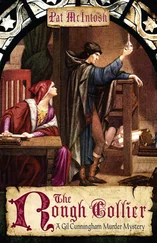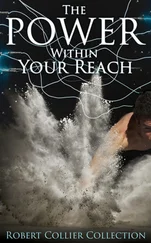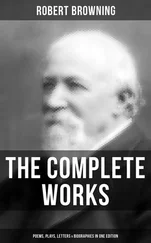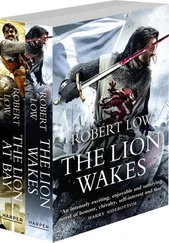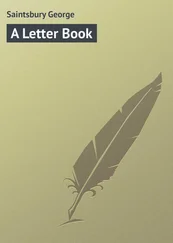Take us at our word—put us to the test—give us an opportunity to prove our claims to you. Use the postcard enclosed. Fill it out and send it to us.
A modern and actual Aladdin’s lamp lies in the return card attached. Rub it with your pencil and your wish for full and complete particulars without obligation will come true.
Remember, an order is simply an opportunity for the Blank to sell itself to you. There is no sale—no obligation to keep it—until you have used it in your own home for 30 days and are satisfied. Just let it show you what it can do.
John J. Jones, Chairman of the Board of the great Associated National Banks, was once asked how he managed to handle such an enormous volume of daily work demanding important executive decisions. "I never need to give more than one hour to the consideration of any question, however important," he answered, "because first, I get all the facts before me, and the time to decide is while the facts are fresh in mind."
Because you are likely to agree with Mr. Jones' sound conclusion, we are sending for your convenience a form on which to register your decision upon the important facts which this letter has placed before you. And there is a stamped, addressed envelope enclosed to bring it back to us, so that you may receive your first benefits from your decision without a minute's unnecessary delay.
Signing and sending the enclosed card puts the burden of proof upon us, and incurs no obligation.
I'm willing to do my part. Are you willing to put me to the test? Just fill in on the enclosed card the size tire your car takes—and watch results!
So don't file this away to think over. There's nothing to puzzle about, because you don't have to send one penny or promise anything, other than that if you don't like the Blank you will return it at the end of the week. That's easy, isn't it!
To prove it, all you have to do is fill in, sign and mail the card. After 30 days, you can return the Blank if you want to.
Try it out. Never mind what we say about the uses your clerks will get out of it—find out! It is easy. Just rather continue to use other send the card.
Use this machine at our expense for ten days. If you like it, keep it. If not, send it back to us, freight collect. This trial won't obligate you in any way, nor will it cost you a penny.
Will you check, on the enclosed card, the particular types of merchandise which would interest you most? In doing this, you will both acknowledge receipt of our catalog, and also enable us to keep you on the list for certain data of interest.
And remember, the book is free. To each of the first thousand manufacturers subscribing to the Blank Magazine, we will send a cloth-bound copy of this did 300-page book without charge. And even the magazine is no expense, for the $2 you pay for it will come back to you many times over before you have read half of the 12 issues.
We enclose letter the Railway Company wrote us. Please return it in the enclosed stamped, addressed envelope, and tell us what you think of our plan.
Tucked away in the inside pages of this letter, you will find a convenient postcard. Your name and address on that card will bring samples of Morco Flavors. These powerful, concentrated flavors possess three times the strength of ordinary extracts. You require only one-third the usual quantity. That's where the big saving comes in.
Take it home. Use the Quick-Lite 10 days. If you don't think it the most wonderful light you ever saw—if it isn't everything we claim it to be, just take it back to the dealer and he will refund your money. We give you this "10-day Visit" offer as an absolute guarantee of complete satisfaction. There are no strings to it. Buy a lamp. Use it 10 nights. If you don't want to keep it—if you would rather continue to use other means of lighting—take the Quick-Lite back to your dealer and get your money.
That's all you have to do—put your name on the enclosed card now, while this free 10-volume book offer is still open. We guarantee your satisfaction and delight. For if after receipt of books you are not more than pleased, send them back at our expense, and any money you may have paid will be returned at once.
* * * * *
Your reader, in short, is interested, but hasn't quite made up his mind. He balks at putting his name on the dotted line. "Some other time" "Tomorrow!" That little word "Tomorrow—Mahana"—is said to have been the cause of the Spanish people’s decline. Certainly it has cost many a salesman and sales letter-writer his job, for more than all other causes put together, it has lost sales.
So do not give your prospect the chance to spring any "Mahana" upon you. Beat him to it. Tell him not to decide now—on your main proposition. Instead, put his mind to working on some minor point—and you will find that a favorable decision on it will, in three cases out of four, carry the major proposition along with it!
CHAPTER 8
HOW TO PUT A HOOK INTO YOUR LETTERS
Table of Contents
As the tail is to the kite, as the rudder is to the ship, so is the close to any important letter. It may be a perfectly good letter aside from that. It may fit right in with the reader's thoughts, it may win his interest, it may spur him to action, but if it does not tell him what to do, if it does not provide a penalty for his not doing it, your prospect will slip away from you like a fish off the hook.
There is just one reason why anyone ever reads a letter you send him. He expects a reward. That is the key to holding his interest. All through your letter you keep leading him on, constantly feeding his interest, but always holding back something for the climax.
You come to it. You make your special offer. Your reader is impressed. He promises himself he will give it favorable consideration.
But you do not want favorable consideration. You want an order or a payment. How are you going to get it? Start your impulse, as outlined in the last chapter. Good! But if that does not work, what then? Provide a penalty!
There are only two reasons why your reader will do as you tell him to in your letter. The first is that you have made him want something so badly that of his own inertia he reaches out for your order card to get it. The other is that you have aroused in him the fear that he will lose something worthwhile if he does not do as you say.
It may be a delinquent debtor in fear of loss of credit standing or of court action. It may be a buyer fearing to lose his chance at a bargain. It may be the merchant fearing to lose your trade. It may be the ambitious youngster fearing to lose an opportunity for advancement.
But unless your close can arouse in your reader the fear that he will lose something worthwhile if he does not do as you tell him, you will get no results.
So when you want to inspire fear, be definite! Be specific! If you are threatening suit, tell your reader that unless you have his remittance or a satisfactory explanation by a certain date, the account goes to your lawyer. If you are going to advance your price, and want to corral all the orders possible at the old figure, set a definite date for your advance. Or if you have only a few articles left, give the exact quantity.
It carries conviction, as you can see from these two examples—
On the 1st of October, the rate of the Messenger will go up to $1 a line. If you place your order before the 30th, you can buy space to be used any time before January 1st at 750 a line. After the 30th, positively no orders will be accepted at less than $1 a line. As a matter of fact, our circulation entitles us to $1 a line right now.
Don’t let this letter be covered up on your desk. Send the enclosed reservation right now, or instruct your advertising agent to reserve the space for you, and make sure of this big bargain.
Читать дальше

